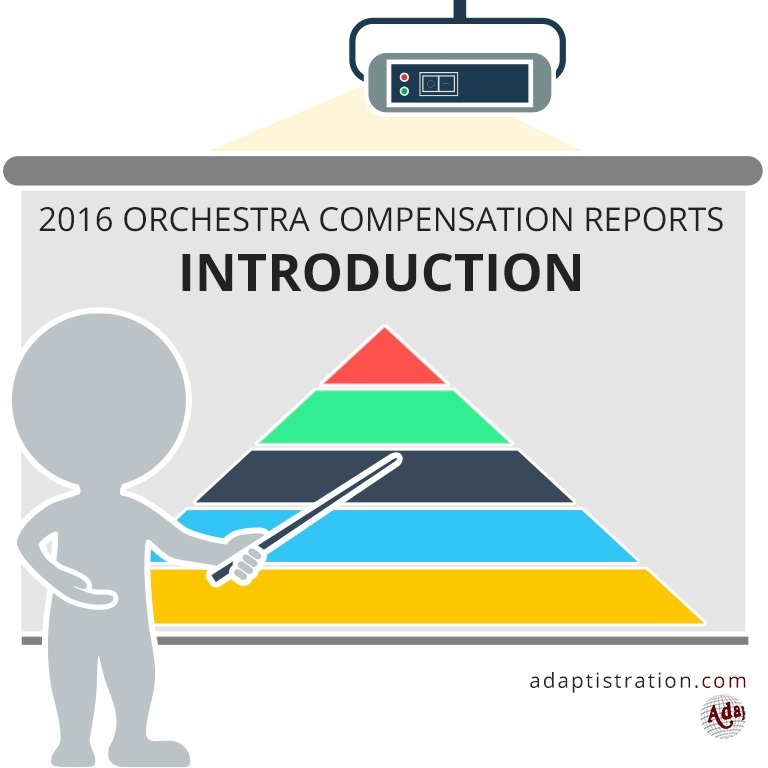One of the changes to this year’s Orchestra Compensation Reports was a decision to let the transparency process related to obtaining missing compensation information and associated clarification unfold for readers to witness firsthand.
As a 501(c)3, an orchestra is required to report information for officers, directors, individual trustees, key employees, and highest compensated employees.
 Having said that, the information does not always get listed in an organization’s 990 and when that happens, I reach out to inquire. In most cases, the organization promptly responds, confirms the oversight, and provides the information along with any corresponding clarification.
Having said that, the information does not always get listed in an organization’s 990 and when that happens, I reach out to inquire. In most cases, the organization promptly responds, confirms the oversight, and provides the information along with any corresponding clarification.
Over the past 16 years, this all happens in advance of a report’s publication; but this year was different.
Instead, any missing figures were listed with a “not reported” designation. As it turns out, there were four instances, all related to music director compensation: Boston Symphony, Houston Symphony, National Symphony, and Spokane Symphony.
Representatives from National and Spokane responded with missing information and/or clarification within eight hours while the remaining two provided information within the next three days.
Boston Symphony
I contacted Bernadette Horgan, BSO Director of Media Relations, and she provided the following information three days later.
As you may know, the instructions printed at the beginning of Section B “Independent Contractors” of Part VII of the 2014 IRS Form 990 (Page 8 of that filing) state the following: “Report compensation for the calendar year ending with or within the organization’s tax year.” The BSO’s tax year, as shown in Item A at the top of the Form 990 (Page 1), is September 1, 2014 through August 31, 2015. As a result, the BSO is required to report in Section B of Part VII payments to the five highest paid independent contractors during Calendar Year 2014.
While Andris Nelsons began his first season as music director of the Boston Symphony Orchestra in the 2014-15 season, he served only four of the twelve months of Calendar Year 2014 as the BSO’s music director. As a result, his compensation for that period did not meet the threshold reporting level to be included on the 2014 IRS Form 990, so there is no missing compensation information regarding Andris Nelsons for the 2014 IRS information return.
Attached is a copy of the recently filed 2015 IRS Form 990 (covering the BSO’s fiscal year from September 1, 2015 through August 31, 2016), which includes the highest five independent contractor payments in Calendar Year 2015, a period which contained 12 months of activity with Andris Nelson’s as the BSO’s music director.” You will see information listed for the “Services of A. Nelsons” for the Calendar Year 2015 period.
Here’s the 2015/16 season compensation information Ms. Horgan referenced and included as an attachment to her message:
Compared to the BSO’s reporting history, it continues their practice of providing clear descriptions of the recipient(s) and related services.
Houston Symphony
I contacted Vanessa Astros, Houston Symphony Senior Director, Communications, and she provided the following information two days later.
Below is the requested information for 14/15.
Payroll compensation $144,000
Concert fees $350,000
TOTAL $494,000
I followed up to confirm if the “payroll compensation” was listed in Schedule J, Part II – Officers, Directors, Trustees, Key Employees, and Highest Compensated Employees and concert fees listed as Part VII.B. independent contractor.
Ms. Astros confirmed that was the case so I inquired whether the Schedule J, Part II figure was the total amount or the amount listed in Base compensation.
For reference, the IRS requires nonprofits to provide a breakdown compensation to identify base salary, bonuses, deferred compensation, benefits, etc.
As saw in this year’s Executive report, those additional sections can include significant sums, as was the case of Minnesota Orchestra CEO’s bonus.
At the time this article was published, Ms. Astros was waiting for that information. This article will be updated with any additional information.
National Symphony
I contacted Rachelle B. Roe, NSO & Classical Director of Public Relations, who responded in the same day with clarification. It turns out that what was presumed in the article, their music director didn’t earn enough to be included in the top five highest paid independent contractors, was exactly the reason.
The 990 only requires us to disclose the five highest-paid independent contractors, and Christoph was not among those.
Spokane Symphony
I contacted Spokane Symphony Executive Director Jeff vom Saal who responded within the same hour with the missing information.
I’m sorry [the music director compensation was] not included in the 990. I don’t know why that is, but I will try to [make sure it is included] next year.
Eckart [Preu’s] salary this past year was $130,000.
From a historical perspective, all four of these responses were typical in that most orchestras respond to inquiries promptly and with the requested information. There have certainly been extreme outliers but it’s always good to see this level of engagement and transparency.
Considering this new information, the music director and Big Picture compensation articles have been updated to include these figures. Lastly, I want to extend my thanks to each of the institutional representatives for providing the information for their respective organizations.




